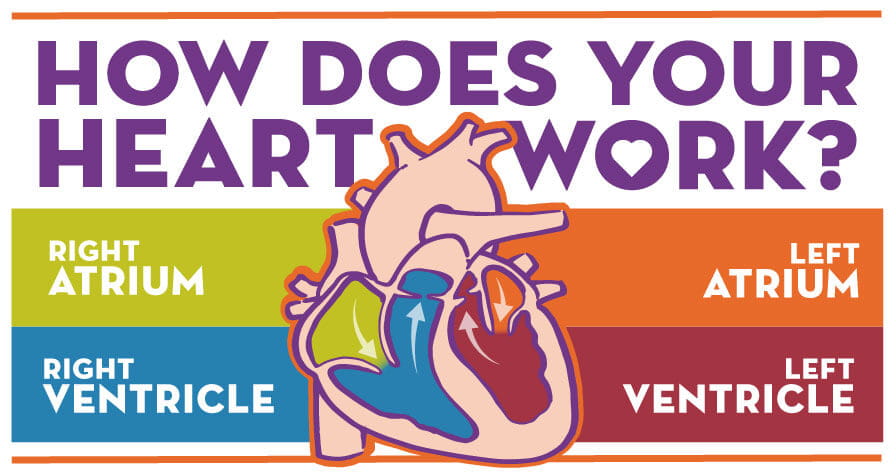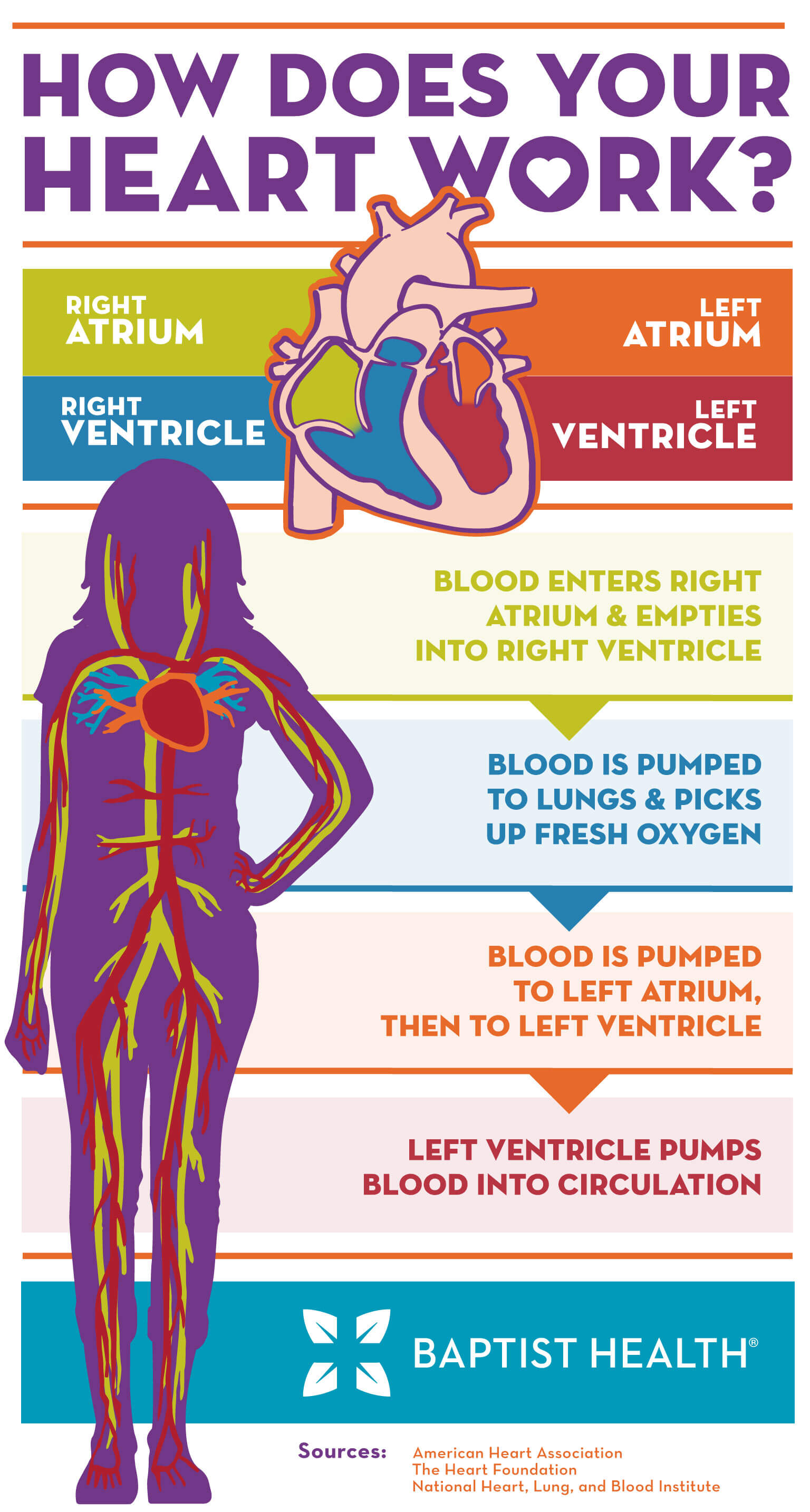How Does Your Heart Work?

To understand how the heart works, you first have to understand the heart’s anatomy. The heart is a pump made up of muscle tissue and is about the size of a human fist. It’s a complex organ that has many moving parts. Let’s take a look at the components that comprise the heart. Then, we’ll discuss the roles each of them play in circulating blood throughout the body.
Chambers
The heart has two sides (left and right) and four chambers (the left atria, the right atria, the left ventricle, and the right ventricle). A muscular wall separates the two sides of the heart. The atria are at the top and are smaller than the ventricles. The left ventricle is larger than the right because it has to pump blood further.
Valves
There are four valves that control blood flow within the heart. These are called the tricuspid, pulmonary, mitral and aortic valves. Valves are like doors within the heart; they open to let blood through and then shut to keep blood from flowing backward.
Circulatory System
The circulatory system is like the body’s blood highway. Arteries are responsible for carrying oxygenated blood throughout the body. The aorta is the main artery that sends blood out into the body.
Veins, on the other hand, bring blood that has been pumped through the body back to the heart. The vena cavae are the large veins that bring blood back from the body to be re-oxygenated.
Blood Flow Patterns
In a healthy heart, blood flows from the body to the heart to the lungs, back to the heart, and then to the body again. Here’s a breakdown of each step:
Step 1:
Oxygen-poor blood that has coursed throughout the body returns to the heart via the veins. This blood enters the right atrium and empties through the tricuspid valve into the right ventricle.
Step 2:
From the right ventricle, blood is pumped through the pulmonary valve and visits the lungs, where it picks up fresh oxygen.
Step 3:
Once the blood is oxygenated, it’s pumped through the pulmonary veins into the left atrium. Then, blood flows through the mitral valve and enters the left ventricle.
Step 4:
The left ventricle (which is larger than the right) pushes blood out through the aortic valve and into the aorta, where the blood enters into circulation, and the process starts over again.
To sum it up, blood comes from the body, to the right atrium, to the right ventricle, to the lungs, to the left atrium, to the left ventricle and out into the body. Your heart works hard to make sure your muscles are infused with nutrient-rich, oxygenated blood. Make sure you’re doing your part to keep your heart healthy. You can start by following these good-for-the-heart nutrition guidelines.
Take care of your own heart. Start by comparing your heart’s actual age to your heart’s biological age and learn your risk of developing cardiovascular disease.




